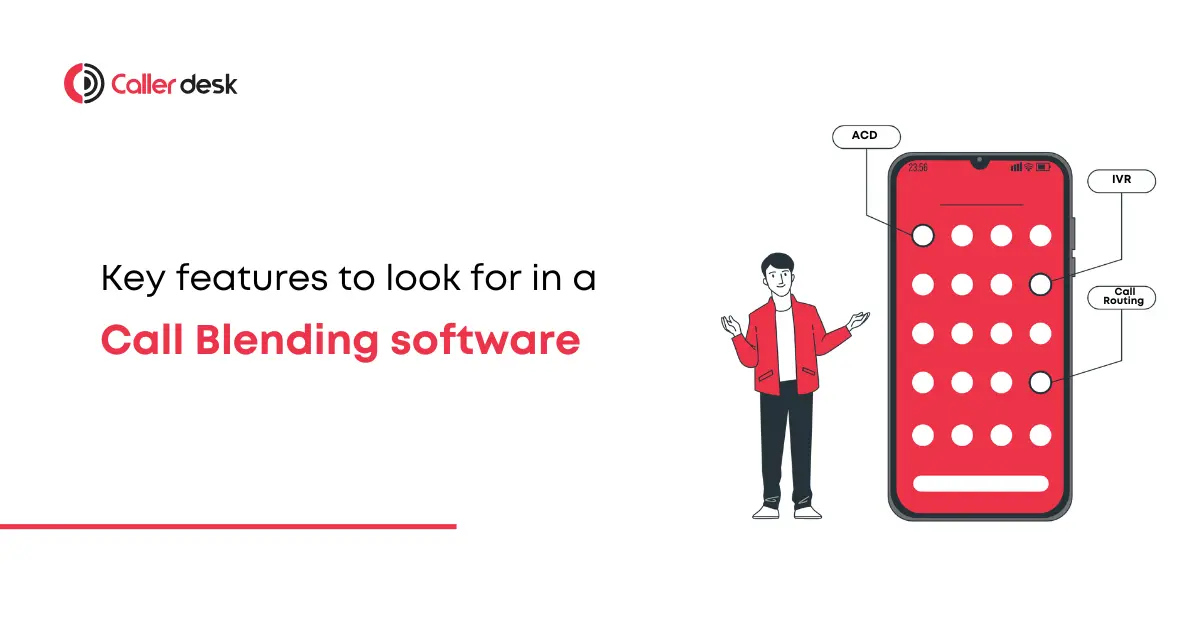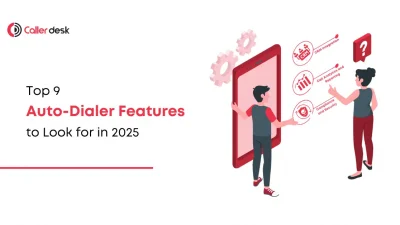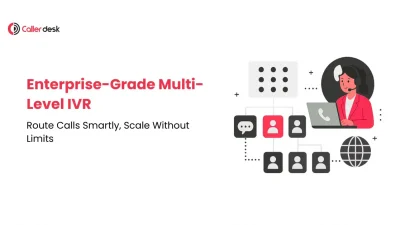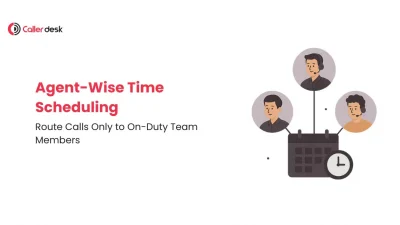Effective communication is essential for any business striving to deliver exceptional customer service while maximizing operational efficiency. However, many businesses face significant challenges in managing both inbound and outbound calls. Disconnected systems, high agent downtime, and inconsistent customer experiences often lead to inefficiencies, revenue loss, and dissatisfied customers.
This is where call blending software comes into play. By seamlessly combining inbound and outbound call handling into a unified system, call blending ensures agents stay productive while customers receive prompt and high-quality service. With advanced features like automatic call distribution, predictive dialing, and real-time analytics, call blending software transforms traditional call centers into dynamic, revenue-driving operations.
In this guide, we’ll dive into the key features of call blending software and how they can elevate your business operations to new heights.
What is Call Blending Software?
Call blending software is a specialized tool that enables agents to manage both inbound (customer inquiries, support requests) and outbound (sales calls, lead follow-ups) communication tasks seamlessly. By leveraging real-time call management technology, this software dynamically adjusts tasks based on call volumes and business priorities.
For example:
- When inbound traffic is low, agents can be automatically assigned outbound sales calls, ensuring maximum utilization of their time.
- Conversely, during peak inbound periods, agents can prioritize customer inquiries, minimizing wait times and improving service quality.
Result: Improved productivity, balanced workloads, and enhanced customer satisfaction.
Why Your Business Needs Call Blending Software
1. Address Key Challenges
Traditional call centers often suffer from:
- Long wait times: Frustrated customers abandon calls before receiving support.
- Agent inefficiency: Idle agents waste valuable time during slow call periods.
- Missed revenue opportunities: Outbound sales efforts are often disconnected from inbound operations, limiting cross-selling and upselling potential.
Call blending eliminates these pain points by ensuring agents are always engaged in productive tasks, whether addressing customer concerns or pursuing sales opportunities.
2. Achieve Tangible Benefits
- Boosted Productivity: Agents spend more time on meaningful interactions.
- Increased Revenue: Maximize sales opportunities with proactive outbound calls.
- Enhanced Customer Loyalty: Faster responses and personalized service improve the overall customer experience.
Top Features of Call Blending Software
To make the most of your investment, look for call blending software with the following features:
1. Automatic Call Distribution (ACD)
ACD is the backbone of any efficient call center operation. It ensures incoming calls are routed to the most suitable agent based on predefined criteria such as:
- Agent availability.
- Skill set.
- Nature of the query.
Key Benefits:
- Reduces wait times.
- Increases first-call resolution rates.
- Enhances customer satisfaction by matching callers with the right agent quickly.
Example: CallerDesk’s ACD system ensures that technical support inquiries are directed to agents with advanced troubleshooting skills, reducing resolution times by up to 30%.
2. Advanced Interactive Voice Response (IVR)
An IVR system acts as a virtual receptionist, allowing customers to navigate a menu and access self-service options.
Why It’s Important:
- Reduces agent workload by handling routine inquiries.
- Enhances the customer experience with personalized options.
- Speeds up call resolution by directing customers to the right department.
Pro Tip: Use customizable IVR flows to prioritize high-value customers, ensuring they receive expedited support.
3. Predictive and Power Dialing
For businesses running outbound campaigns, efficient dialing tools are essential:
- Predictive Dialing: Dials numbers ahead of agent availability, reducing idle time.
- Power Dialing: Sequentially queues and dials numbers, ensuring agents stay busy.
Impact: Businesses using CallerDesk’s predictive dialing feature have reported a 40% increase in outbound call efficiency, enabling them to connect with more leads in less time.
4. Omnichannel Integration
Customers today engage with businesses across multiple platforms—voice, email, chat, SMS, and social media. Call blending software with omnichannel capabilities consolidates all these interactions into one system, allowing agents to provide consistent service regardless of the channel.
Key Benefits:
- Unified customer interaction history.
- Faster issue resolution across channels.
- Improved customer engagement and retention.
5. Real-Time Analytics and Reporting
Data-driven decisions are critical for call center success. Real-time analytics provide valuable insights into operational performance, helping managers:
- Monitor agent productivity.
- Track call volumes and response times.
- Identify areas for improvement.
Example: With CallerDesk’s customizable dashboards, managers can identify trends like peak call times or high abandonment rates, enabling them to adjust strategies for better outcomes.
6. CRM Integration
Seamless integration with CRM systems empowers agents with instant access to customer data, including:
- Purchase history.
- Past interactions.
- Contact preferences.
Result:
- Personalized interactions.
- Improved lead management.
- Faster issue resolution.
Use Case: A retail business using CallerDesk’s CRM integration reduced customer wait times by 50%, leading to higher satisfaction and repeat purchases.
7. Call Monitoring and Quality Assurance
Supervisors play a critical role in maintaining service quality. Call monitoring tools allow managers to:
- Listen to live calls.
- Provide real-time coaching through whisper functionality.
- Intervene in challenging situations with call barging.
Bonus Feature: Call recording enables teams to review past interactions for training and compliance purposes.
8. Scalability and Flexibility
Your call center needs will grow as your business expands. Ensure the software can scale effortlessly to accommodate:
- Higher call volumes.
- Additional agents.
- New communication channels.
Why Choose CallerDesk: Its cloud-based infrastructure allows businesses to scale operations without compromising performance or reliability.
How CallerDesk Stands Out
CallerDesk offers a feature-rich platform tailored to meet the unique needs of modern businesses. With:
- AI-powered call routing for faster resolutions.
- Advanced analytics tools for actionable insights.
- 24/7 customer support to ensure uninterrupted operations.
Success Story: A healthcare provider using CallerDesk’s omnichannel capabilities achieved a 25% increase in patient satisfaction by integrating appointment reminders with inbound support calls.
Conclusion
Choosing the right call blending software is more than just a technological decision—it’s an investment in your business’s growth, productivity, and customer satisfaction. With features like ACD, predictive dialing, CRM integration, and real-time analytics, the right solution can streamline your operations and drive measurable results.
Ready to revolutionize your call center operations?
With CallerDesk’s advanced call blending solutions, you can enhance agent productivity, deliver exceptional customer experiences, and scale your business effortlessly. Schedule a free demo today and discover how CallerDesk can transform your communication strategies.
Frequently asked questions
1. What is call blending software?
Call blending software is a system that enables agents to manage both inbound (customer support) and outbound (sales or follow-up) calls seamlessly. It dynamically adjusts tasks based on call volume, ensuring optimal agent productivity and an improved customer experience.
2. How does call blending improve productivity?
Call blending minimizes agent idle time by automatically assigning outbound tasks during low inbound call periods and vice versa. This keeps agents engaged and ensures consistent workflows, maximizing talk time and operational efficiency.
3. Why is CRM integration important in call blending software?
CRM integration allows agents to access real-time customer data, such as purchase history and previous interactions. This enables personalized conversations, faster issue resolution, and better customer satisfaction.
4. Can call blending software handle omnichannel communication?
Yes, advanced call blending software often includes omnichannel capabilities. This means it can manage interactions across multiple platforms like voice, chat, email, SMS, and social media, ensuring a unified customer experience.
5. What industries benefit most from call blending software?
Industries such as e-commerce, healthcare, financial services, telecommunication, and customer support centers benefit the most from call blending software, as it helps manage large call volumes, improve customer retention, and drive sales.
6. How does call blending contribute to revenue growth?
Call blending creates more opportunities for upselling and cross-selling by allowing agents to engage customers during inbound and outbound calls. It also improves lead management, follow-up efficiency, and customer satisfaction, directly contributing to higher revenue.
7. What are the key features of an effective call blending software?
Some essential features include:
Automatic Call Distribution (ACD): Ensures proper call routing.
Predictive Dialing: Optimizes outbound campaigns.
Omnichannel Integration: Unifies all communication channels.
Real-Time Analytics: Tracks performance and customer satisfaction.
CRM Integration: Enables personalized interactions.
8. How does CallerDesk stand out as a call blending solution?
CallerDesk offers a cloud-based platform with AI-powered call routing, real-time analytics, CRM integration, and omnichannel support. Its user-friendly interface and scalability make it an ideal choice for businesses of all sizes looking to improve communication efficiency.
9. How can call blending software enhance customer experience?
Call blending software reduces wait times, routes calls to the most qualified agents, and provides a personalized experience through CRM data integration. This ensures faster resolutions and higher customer satisfaction.
10. Is call blending software scalable for growing businesses?
Yes, most modern call blending solutions, like CallerDesk, are cloud-based and easily scalable. They adapt to increasing call volumes, additional agents, and new communication channels as your business grows.





